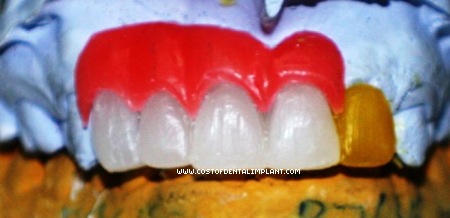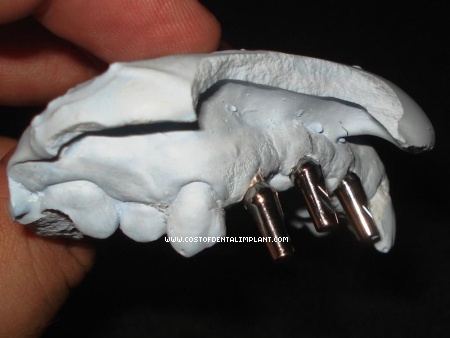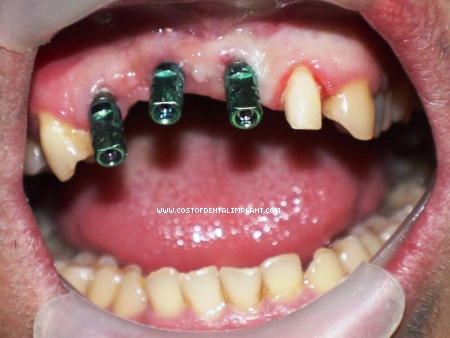Artificial Gingiva in Dental Implants
- Jan 16th. 2011
- By Dental Implants Cost
These are functional and esthetic problems that can be solved by prosthetic gingival reconstruction in Dental Implants:
1. Narrow and longer prosthetic teeth.
2. Inverted smile line.
3. Misalignment of the tooth axes.
4. Unsupported lip profile.
Individual papilla loss and situations of horizontal and vertical tissue dificiencies of the anterior region are some of surgical limitations of augmentation that can be solved by prosthetic gingiva.

Wax-up of Implant Supported Prosthesis with Artificial Gingiva


